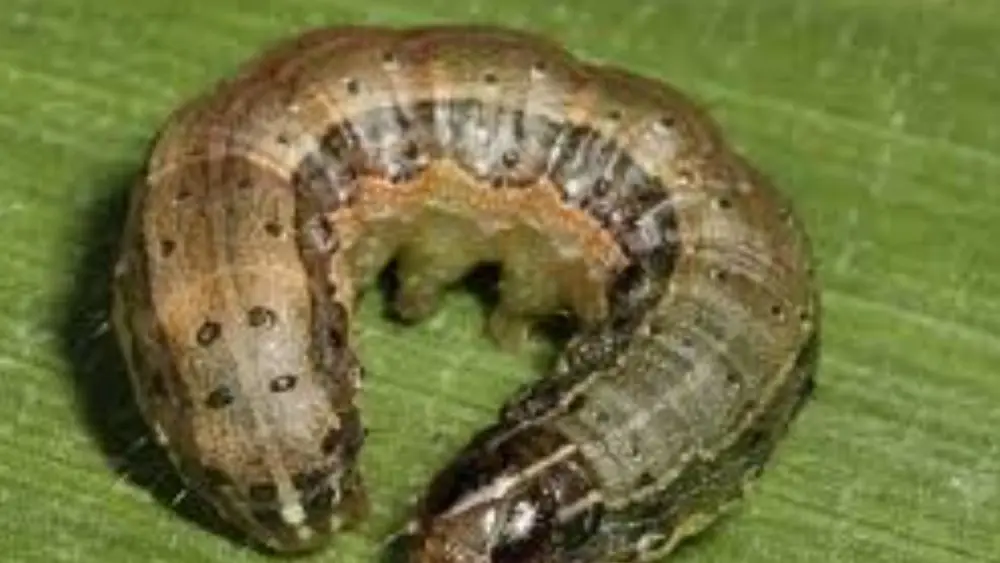
West Plains, Mo. ― Agronomists in southwest Missouri and northern Arkansas report sightings of fall armyworms in grass and legume crops. Fall armyworms do not overwinter in Missouri and migrate northward from the Gulf Coast states. They damage forages by eating through the tender top leaf layer and leaving holes. Infested fields may appear drought-damaged. Armyworms march quickly into lush, green pastures and fields, so regular scouting is necessary. They feed on hundreds of host plant species, including tall fescue and alfalfa. Fall armyworms do not feed during the heat of the day, so scout in early morning or evening. Look for bird or other predator activity, which is an indicator of infestation. To scout for fall armyworm, select 10 random locations in a field and look for larvae in a 1-square-foot area at each location. If you find three or more half-inch larvae per square foot, consider chemical control or early harvest. Larvae more than 1.5 inches long are close to pupation, so chemical control may not be warranted. Fall armyworms resistant to pyrethroids were discovered in Arkansas and Missouri. If chemical control is warranted, use a different chemical class to manage fall armyworm.
For a Complete Look at All the Latest News Click Link Below
https://www.ecommnewsnetwork.com/category/news-daypop/



